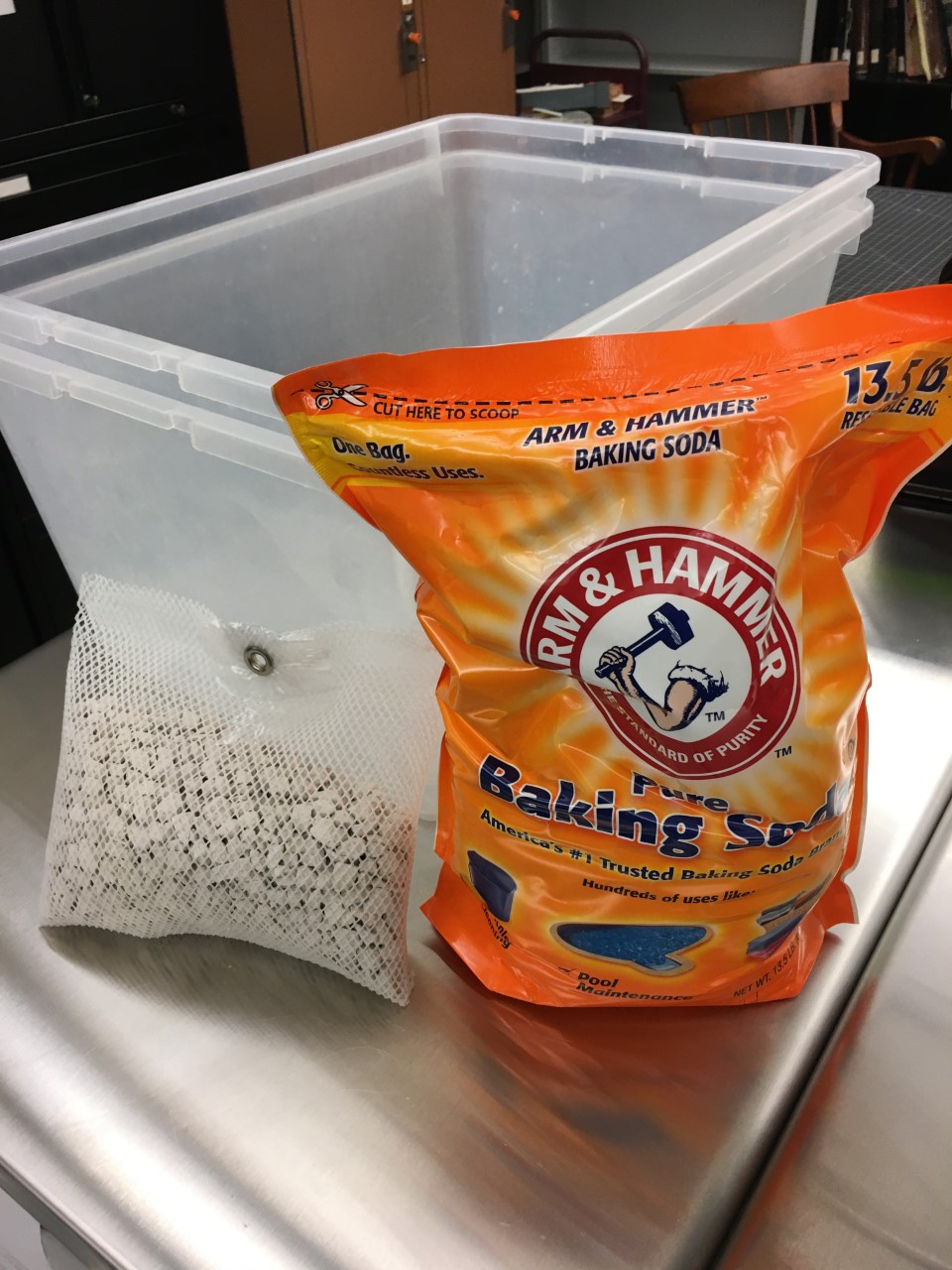This blog post was written by Amy Sullivan, Head of Preservation Services for Mason Libraries.
Do you ever wonder how to treat stinky smelly collections? I’ve gotten a surprising number of questions via email and Instagram about that since the pandemic started. Maybe people are trapped at home with odoriferous things or maybe the regular old book smell in the office is more noticeable once you’ve been gone for a while. Either way, here are some tips and tricks for reducing that funk:
Create an enclosed chamber. It needs to be large enough to hold all of the items* in question with room to spare.
You’ll need an odor-absorbing material, such as baking soda, unscented clay kitty litter, or zeolites (which can be found commercially under such product names as Gonzo). You’ll also need two containers – one small enough to fit inside of the other with the lid to the larger container securely in place.
Place the odor absorber in the bottom of the larger container. Place the collections materials in a smaller container and close the lid. (I’ve found it useful to leave plenty of space around the items to allow for air circulation, and built my DIY chambers to accommodate that, but you can certainly use a set up as simple as one plastic trash can in another.) Check in weekly to see if the smell is gone (the time it takes will vary, and the weekly check in is a great time to refresh your odor absorber) and take your collections out of the chamber once it is.
*This method is for paper based collections materials ONLY!
Here are some photos of the small and large set ups I’ve created in my lab for this purpose, including their component parts. (With a cameo by our resident handyman and Oral Historian, Bob Vay!)



Follow SCRC on Social Media and look out for future posts on our Facebook, Instagram, and Twitter accounts. To search the collections held at Special Collections Research Center, go to our website and browse the finding aids by subject or title. You may also e-mail us at speccoll@gmu.edu or call 703-993-2220 if you would like to schedule an appointment, request materials, or if you have questions. Appointments are not necessary to request and view collections.

